I’d like to introduce you to Bob and Karen Wiltse, a most dynamic pair! They call themselves, “Serial Entrepreneurs.” Over the past decades this visionary couple has creatively carved their own life path through innovation and hard work. Bob and Karen had invited us to stay at their off-the-grid, lighthouse home on Charity Island, ten miles off shore in Saginaw Bay. This clever couple has left a handprint on our hearts. Join us!
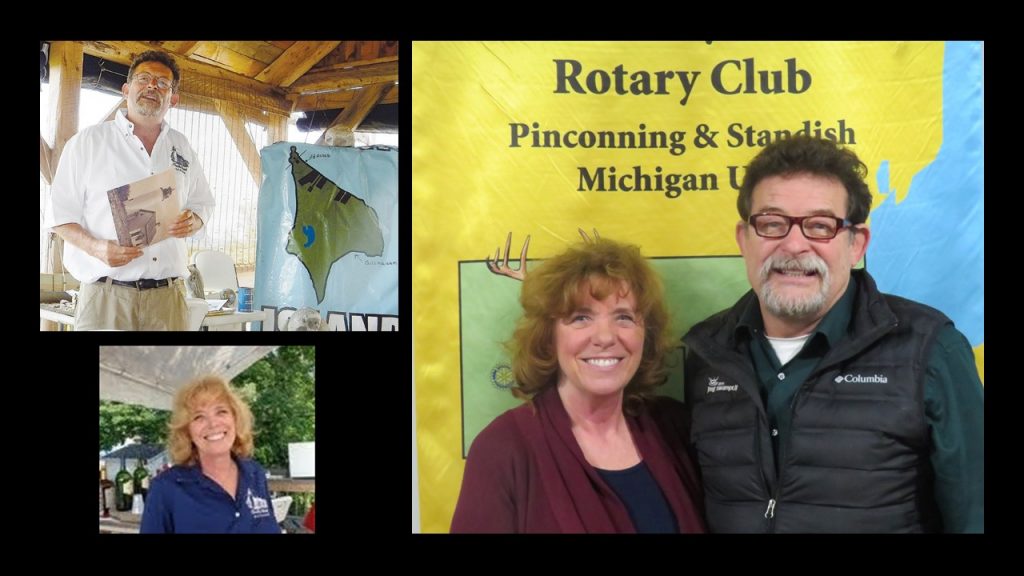
Bob and Karen have built their lives around this mission.
Photo Credits: Huron News, Remerica Realty, Northern Bay Arenac Rotary
“I’ve been my own boss since I was 26.” Bob had shared when we’d spoken on the phone. His creativity has led him into the restaurant business, real-estate and now renewable energy. In their spare time Bob and Karen had purchased and restored the Standish Train Depot. They have carried an affinity for keeping many facets of history alive.
Arriving At Charity Island
As we secured our boat, chirping from every direction had enveloped us. The wind had rustled softly as waves lapped the shore, I exhaled and felt blanketed in peacefulness.
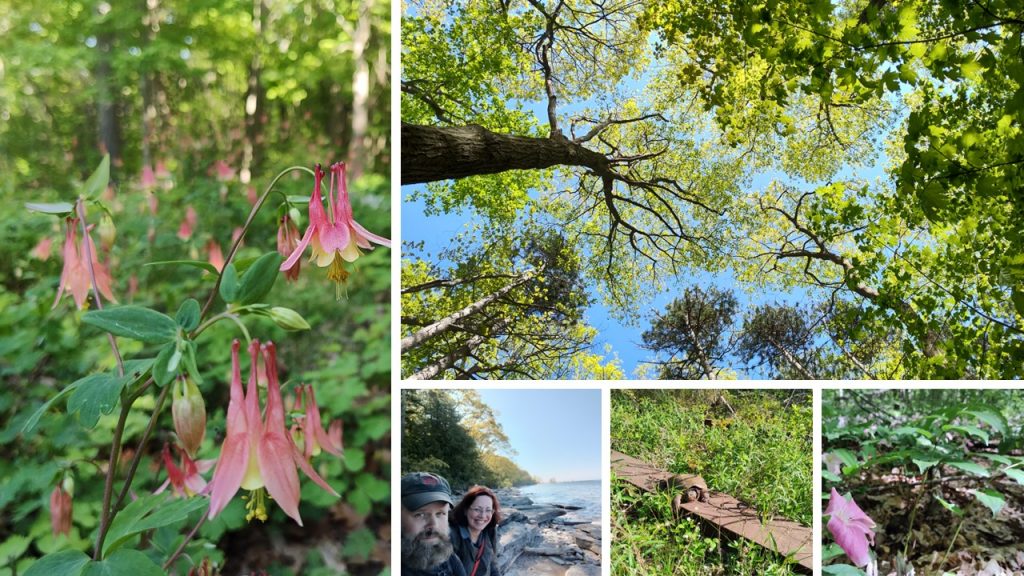
wildflowers, songbirds, bald eagles, foxes, mink, raccoons and MANY chipmunks.
Bob’s welcoming laughter had threaded it way through the branches as we carried our gear along a wooden planked dock built over barrels. Climbing a set of stairs we found Bob, smiling, alongside his four-wheel drive vehicle. I marveled at his welcoming attitude, recalling how he and Karen have hosted hundreds of people at their island home. It takes special individuals to constantly greet strangers openly!
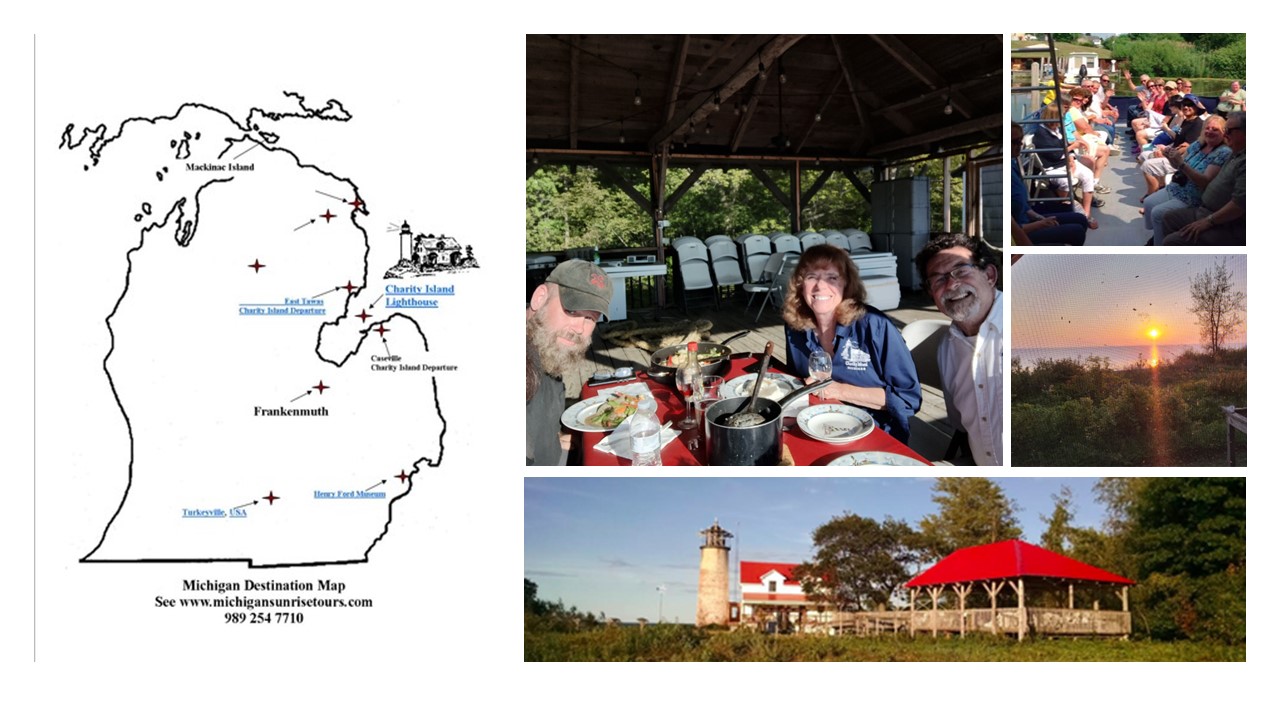
In the foreground is the dinner deck where day cruisers would enjoy a delicious meal.
Photo Credit: Explorer Charter (bottom and top right)
Bob and Karen had created Charity Island as a destination so they could share their love for the island’s history. As we had researched, our curiosity about this adventurous and creative couple had grown. When they had invited us to spend the night at their keeper’s quarters, we had been honored and thrilled!
Bob and Karen Wiltse
After being in the restaurant business and then realtors, the duo had purchased Charity Island in 1992 with the vision of building a marina and selling parcels of land for development. However, following a series of archeological and scientific evaluations of the property, which Bob and Karen had financed as part of the permit process, the federal government had stepped in with interest wanting to purchase 90% of the island. The couple had willingly decided to keep the island as a nature preserve, yet they still had a wish to share the history of this island lighthouse with others.
First they had to construct a marina for larger boats. Next, the couple had needed to rebuild the keeper’s quarters which they have wisely completed using renewable resources. On their wrap around porch, they had hosted island dinners for enchanted guests. Later, the couple had built a deck pavilion to host these meals. During our stay we had the privilege of catching glimpses into these tales of hard work and heard stories where lives have connected.
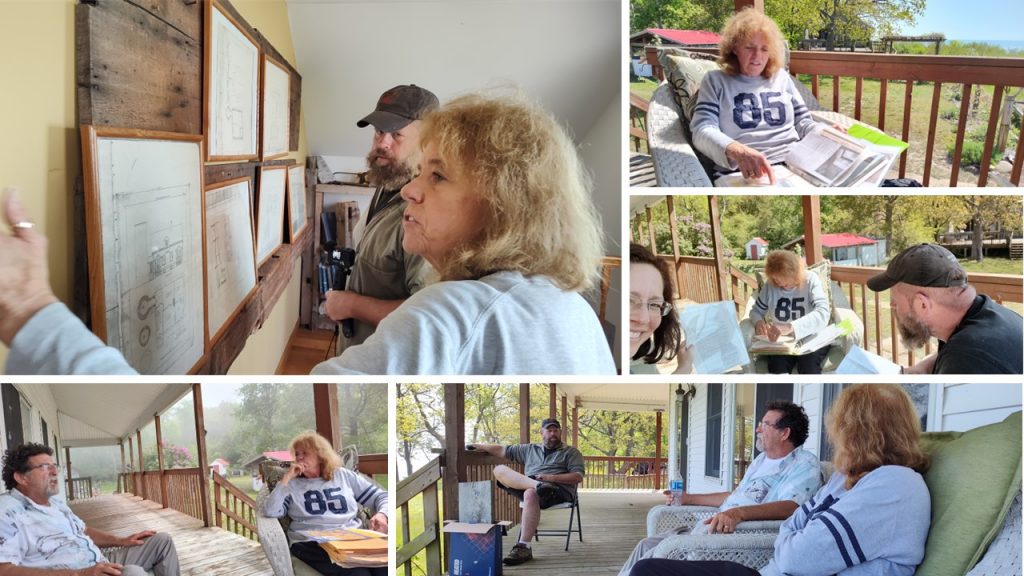
We were in awe as she shared stories of the lighthouse, building the marina,
reconstructing the keeper’s quarters and their dinner cruises.
Karen had scrap books filled with letters of appreciation from dinner cruise guests. A gentleman who had worked in the printing room at the Detroit Free Press had come to Charity Island for the dinner cruise. He’d returned to Detroit and shared about his amazing experience. Soon a reporter and photographer had booked tickets. Following the reporter’s visit a front page article had appeared featuring this remarkable couple who had hosted island dinners. A year later, the press operator had returned and gave Bob and Karen the news plate from the printing press. (bottom photo below)
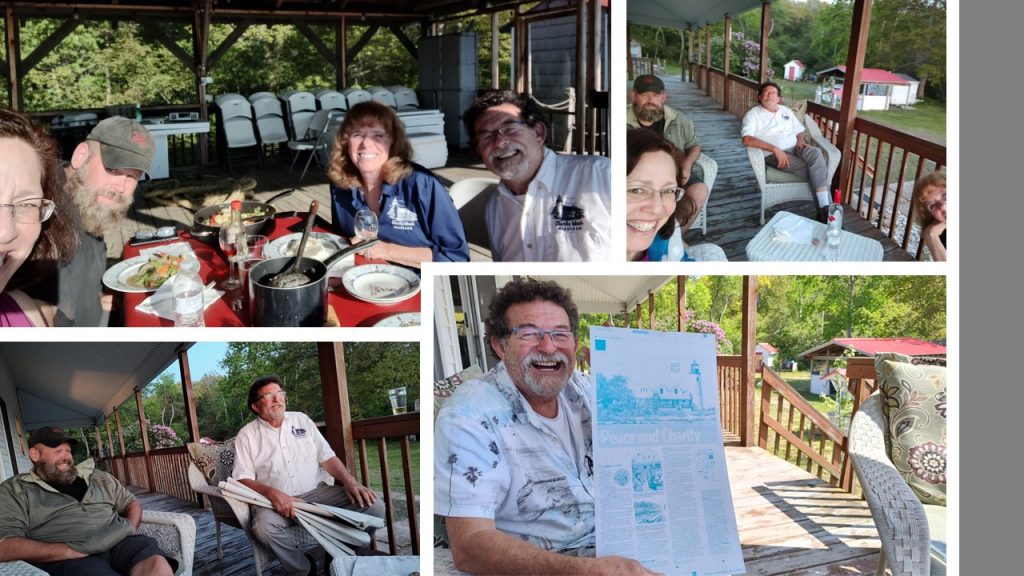
The Detroit Free Press article about the dinner cruises he and Karen had hosted.
Pockets of memories had been tucked in every corner the Wiltse’s 32 year homestead. As stories were shared, Bob had often retraced the steps taken when the actual events had happened. These narratives resonate in his soul. So many guests had made a lasting impression on Karen and Bob, just as this couple had made life-long memories for scores of visitors.
The Marina
Constructing a marina for larger boats through the shallow, rocky apron of the island had been a challenging task. I appreciate people who have creative visions of how things can be and find ways to make it possible! Karen had brought out photos of this endeavor!

Bob and his crew had dug a channel and marina in sixteen weeks.
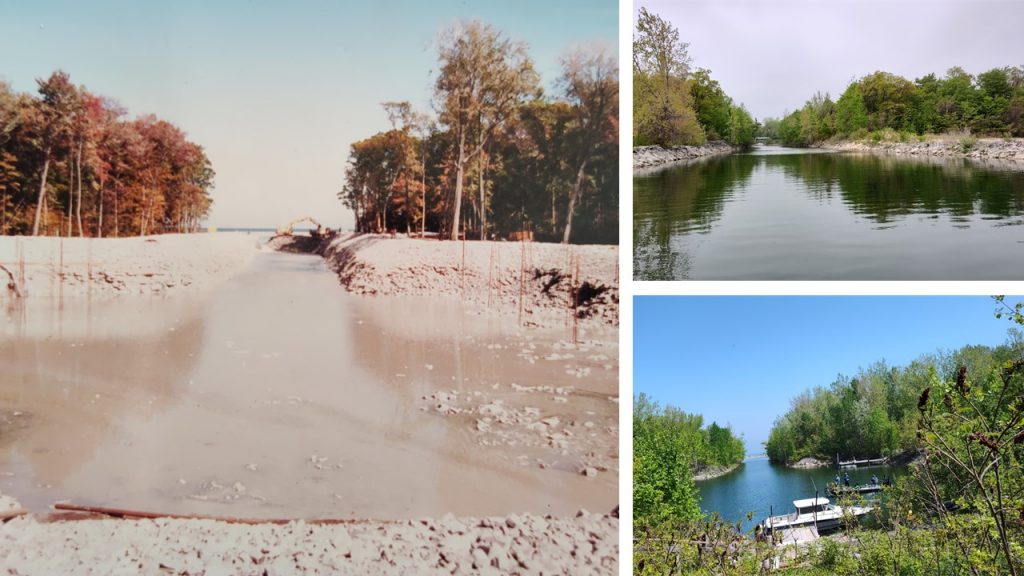
Charity Island History
Bob and Karen had hired archeologists and scientists to evaluate the land. Through these studies, it had been discovered that Charity Island holds a treasure trove of history. 350,000 million years ago the area had been covered in a shallow ocean and formed “Bayport Limestone” which has the mineral “chert,” a type of flint.
Bob had bounced, radiating energy, as he held a split rock with a darker center. “As a kid I’d always wanted to find an arrowhead, and this island is full of them.” Karen added, “You can have one.” She gestured to their collection.
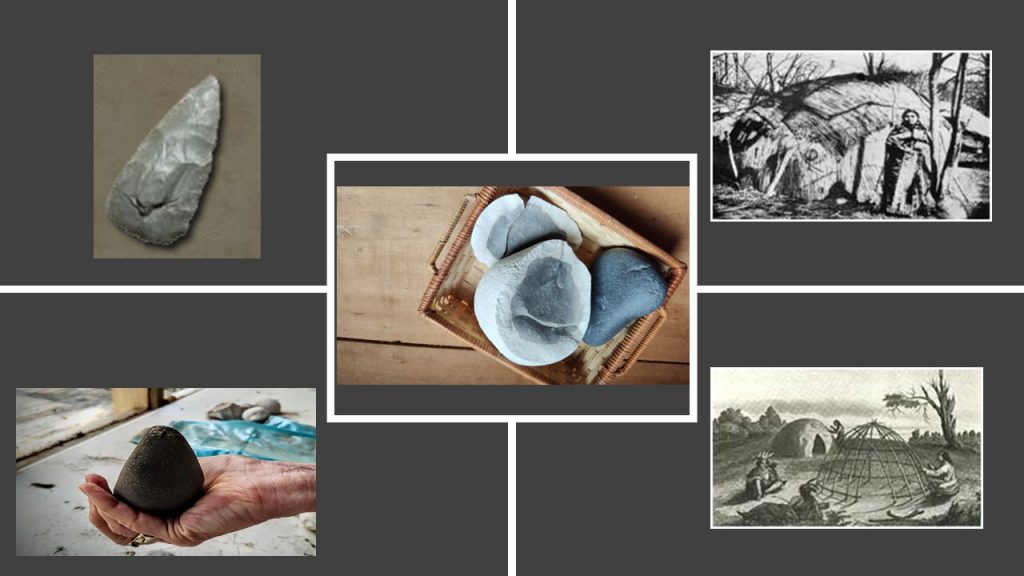
(bottom left) Pounding stones have been plentiful on Charity Island, too.
In 1820 on an expedition with Lewis Cass, Henry Schoolcraft had sought respite on Charity Island. Schoolcraft had found Chalcedony (chert) and calcareous spar, jasper and iron. He had written, “These discoveries created a strong desire to make a geological survey of the island, but we were prevented from attempting it, by the necessity of expeditious progress across the bay while the weather favored.”
There are over 200 migrating bird species making the island vital to the survival of these animals. In addition, the eleven acre, spring-fed pond has been a favorite nesting place for bald eagles.
Bob and Karen just didn’t feel right about selling lots for development. The couple had decided to sell 90% of the island to the Federal Fish & Wildlife Service in 1997. The island habitat would be protected! Bob and Karen would retain the lighthouse area on the northern tip of the island.
Lighthouse History
In the mid 1800’s as the lumber industry grew, it had been decided that a lighthouse on Charity Island would be beneficial. In 1856 construction began using bricks from Milwaukee. Colin Graham, the first keeper, took his position in 1857. Colin, his wife and twelve children moved into the cozy keeper’s quarters.
What was life like for the family on this remote island? Well, Bob had shared that the eldest Graham boys had been tasked with retrieving supplies by rowing out to passing boats. With the shallow rocks surrounding the island, ships had been prevented from coming near the shore. These goods had been wrapped in newspaper and dropped into the water for the boys to retrieve. Once these parcels had been unwrapped, Colin would lay out the newspaper in front of their stove to let it dry so he could learn about the latest updates concerning The Civil War.
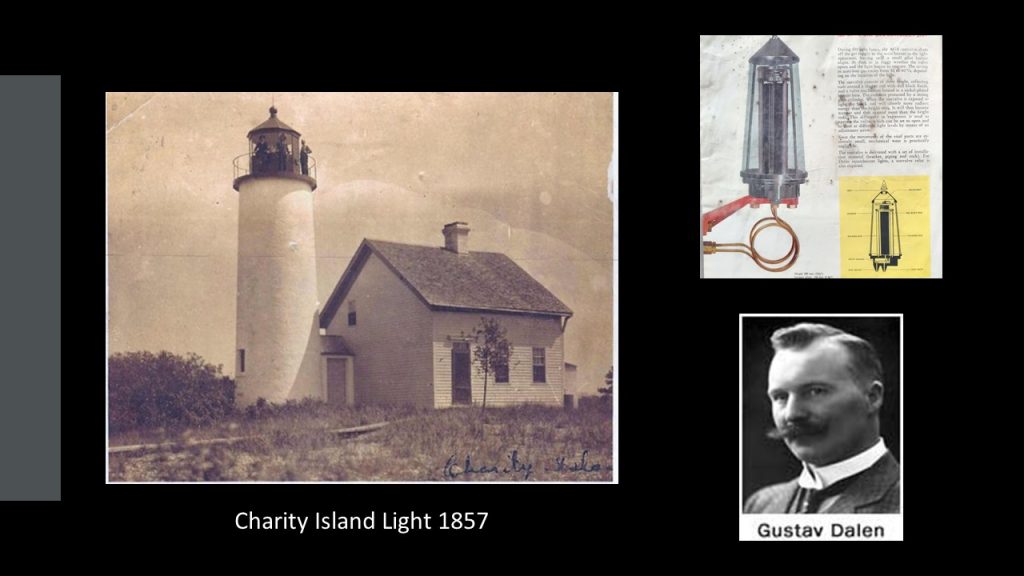
which he’d earned a Nobel Prize in 1917.
Sometime around 1916 Charity Lighthouse had been fixed with a Gustav Dalen’s “sundown” light. As the sun went down and the air cooled, the acetylene gas would automatically release, which would ignite the lamp at the top of the lighthouse tower. Then, when the sun appeared in the morning, the acetylene valve would close, turning off the beacon. This invention had made light keeping less strenuous.
Charity Light had been deactivated in 1939, after 72 years of faithful service, when Gravelly Shoal crib light station had been activated nearby.
The Keeper’s Quarters
Unfortunately in 1992, at over 130 years old, the keeper’s quarters had not been salvageable. So Bob and Karen had it torn down and the rubbish burnt. Once the area had been cleared, they had planned to use the original foundation for their new home.
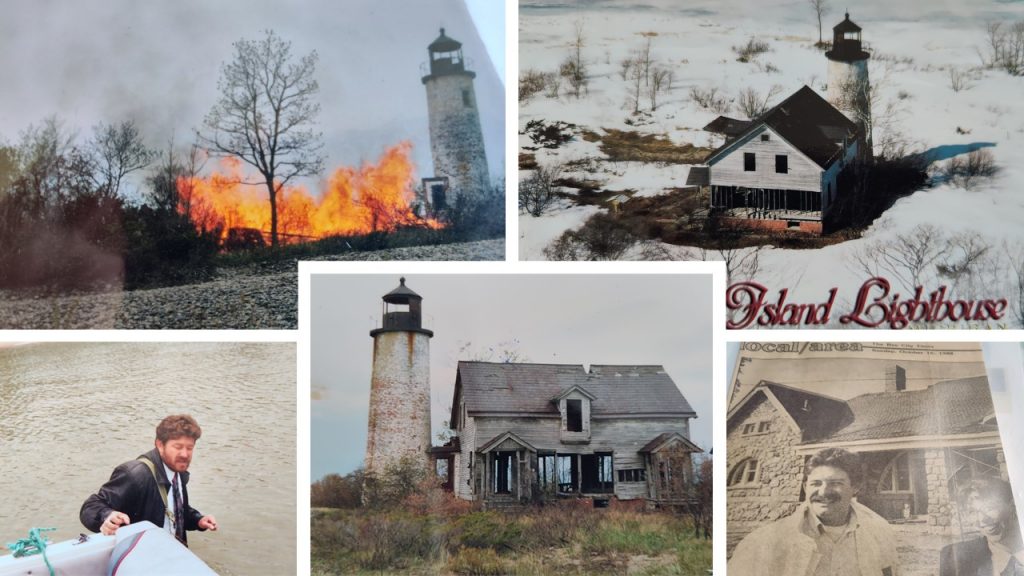
(bottom left) Bob, clad in a tie and waders, had come to work on his island home. (mid 1990’s)
Rebuilding The Keeper’s Quarters
Bob and Karen had not only been mindful of the island’s natural species, but they had strategically planned their keeper’s quarters to be “off grid” using renewable resources: sun and wind. A basement cistern had already been in place to filter and store water. Being ten miles off shore in Lake Huron, one needs to be resourceful and clever. Bob and Karen have been on point with these characteristics!
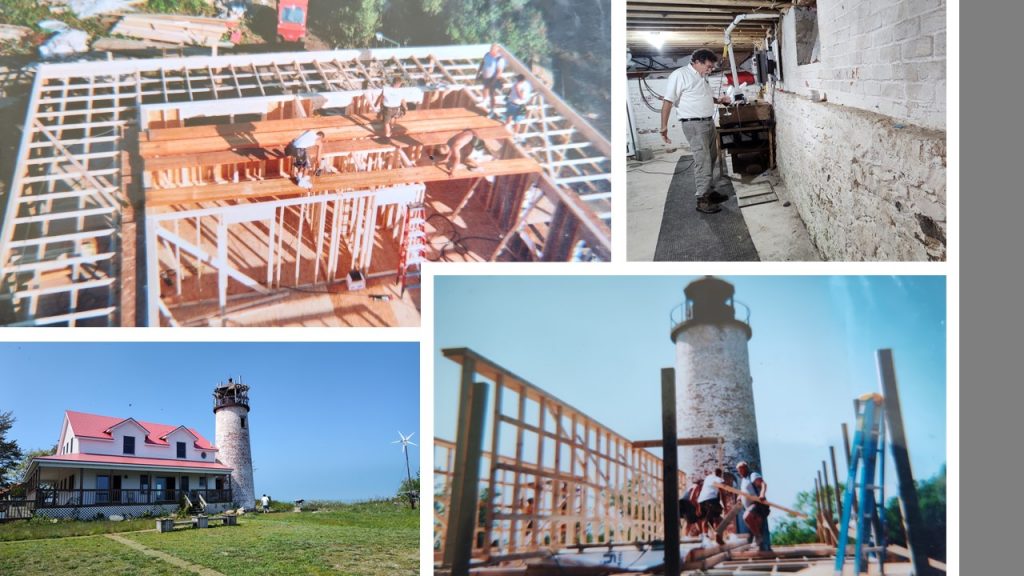
Bob (top right) had shown us the water cistern and batteries in the basement
which were being charged by the wind turbine and the solar panels.
It just so happened that a team of area builders annually selects a “special” project. Charity Island had been chosen for their 2003 ‘give back event,’ where cash and food had been the currency.
“They didn’t need to talk to each other, they just worked.” Bob explained with wonder in his eyes. Karen had passed us photos of the this dazzling feat. “They’d worked from Saturday morning to Sunday afternoon. They had the whole house framed!”
Karen and Bob’s tales had continued to cascade like a bubbling brook as we puttered at small tasks to help out. I marvel at this pair’s dedication, vision and work ethic. As we sat on the wrap around porch, Bob asked Karen, “Can you find the copy of the book inscription?” Karen shuffled through the pages of thank you letters tucked in clear plastic sleeves. “Here it is!” She’d handed us a photo copy of a book signed in 1885.
William L. Pierce’s Granddaughter
Bob looked at the inscription and told us a story of connections across generations. “A 79 year old women, accompanied by her family, had come from Ohio for a dinner cruise. She’d been carrying this book.” Bob nodded toward the page I was now holding. “It had been stormy, so we had canceled the tour for that day.” Bob had explained how she’d begged him, ” ‘We drove here for hours. Please take us to Charity Island.’ ” the frail woman had implored. “I told her a storm was coming and we’d cancelled the dinner cruise.” Bob had shrugged.
But then she held up this book.” Bob gestured to the photocopy in my hands. ” ‘I am William L. Pierce’s granddaughter.’ ” He had been an assistant light keeper. ” ‘I have his book.’ ” She’d opened the cover revealing his signature.
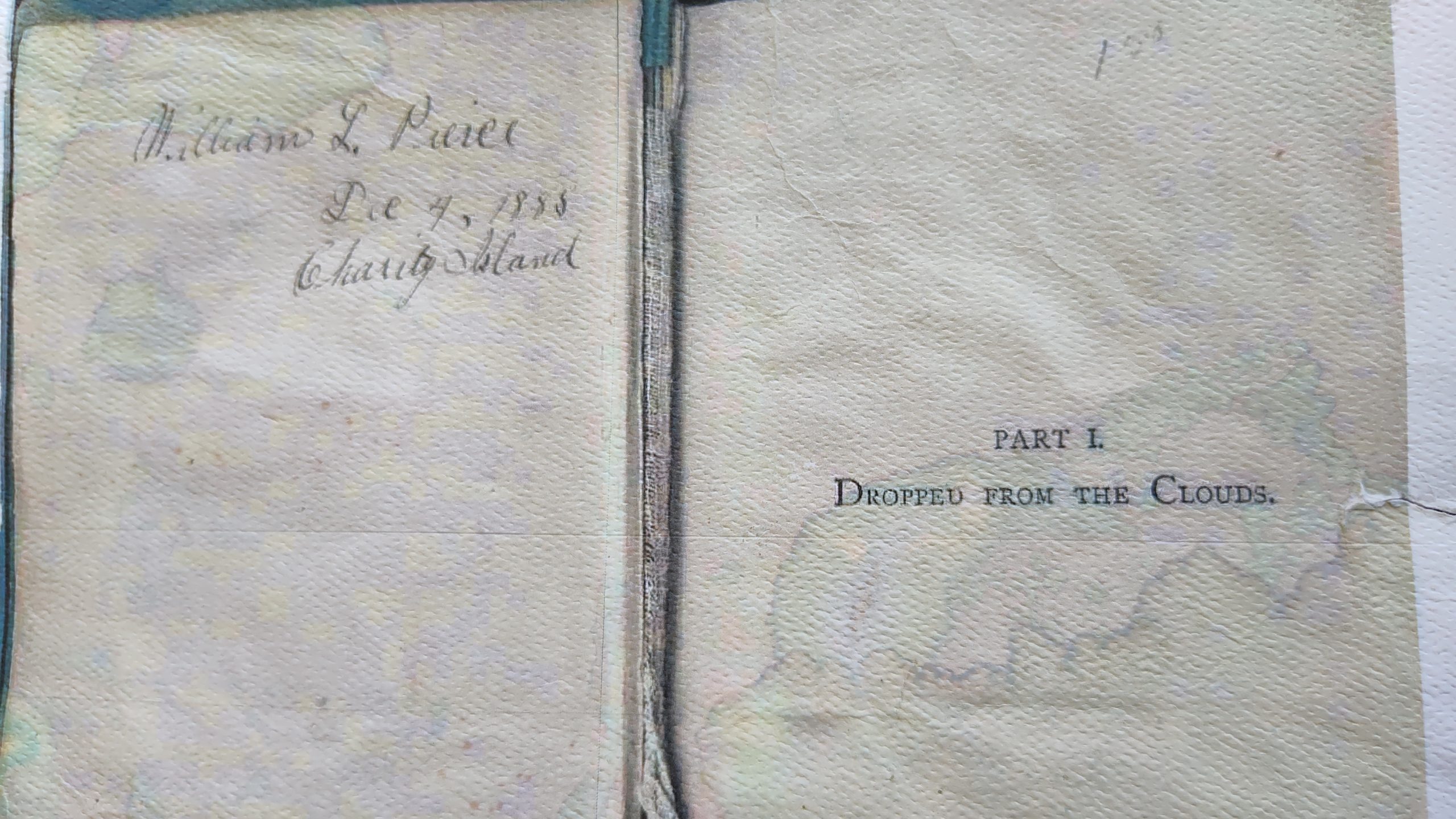
This assistant lightkeeper had been a hero on this night. Had he signed the book before or after the rescue?
This woman, who had carried years of experience, continued, ” ‘I remember sitting on his lap where he’d said to me, ‘You have to see Charity Island someday.’ Well, I’m here now and I’m ready to go.'” Bob had explained how he’d still felt hesitant. “Let’s wait until 6:00pm, then we’ll see how the weather is.” He’d suggested that the family go out to eat, then meet back at the dock.
Bob had known the story of assistant keeper, William Pierce’s heroism on the night of December 4, 1885 when The Oconto had run aground. Pierce and head keeper, MacDonald, had successfully rowed all 47 passengers safely ashore during the storm.
Unfortunately, the cook from The Oconto, Charlie Brown, had passed due to a heart attack. He, too, had been brought ashore and respectfully buried on Charity Island, his final resting place.
So, at 6:00 pm the Pierce descendants and Bob had reconvened at the dock. The weather hadn’t improved, but “When I looked at the inscription I realized that William Pierce had signed this book on the same night as The Oconto shipwreck!” Bob’s eyes had sparked with awe as he recounted this story. “I knew I had to bring her to the island!”
“The waves rocked the boat. It was treacherous,” Bob had reviewed this journey with William Pierce’s granddaughter and her family. “but the look on the woman’s face let me know I was doing the right thing.” The group had reached the island safely.
“At one point she stood alone at the base of the tower facing the shore with the book wrapped in her arms.” Bob had stood up as he described how the howling wind had made her scarf and dress dance in stormy weather. “We really needed to get back on the water while it was still daylight, but something made me invite them inside to see the keeper’s quarters.” Bob gestured and opened the sliding door as if he had been ushering the family over the threshold once again.
When the group had reached the basement, “the elderly women froze stiff and reached toward the limestone wall. She lightly touched the white-washed stone with a shaking hand and a sob had escaped from deep inside.” When she recovered she had explained, “As a young man my Grandfather saw this same wall every time he’d come down to get the oil.” Bob’s voice had tripped over these syllables and his eyes glistened as he shared this powerful story of connection to the past. This woman had heard tales of her Grandfather’s lightkeeper duties as a little girl and here she was finally fulfilling her promise to see the Charity Island Lighthouse.
Admiration
Our conversations flowed easily from family to life paths, economics and politics. It had been refreshing to share our various views and life experiences openly while being mindful, respecting each other. It’s rare to find friends who can discuss such topics with eloquence and finesse. We admired Bob and Karen’s passion and willingness to share their island home.
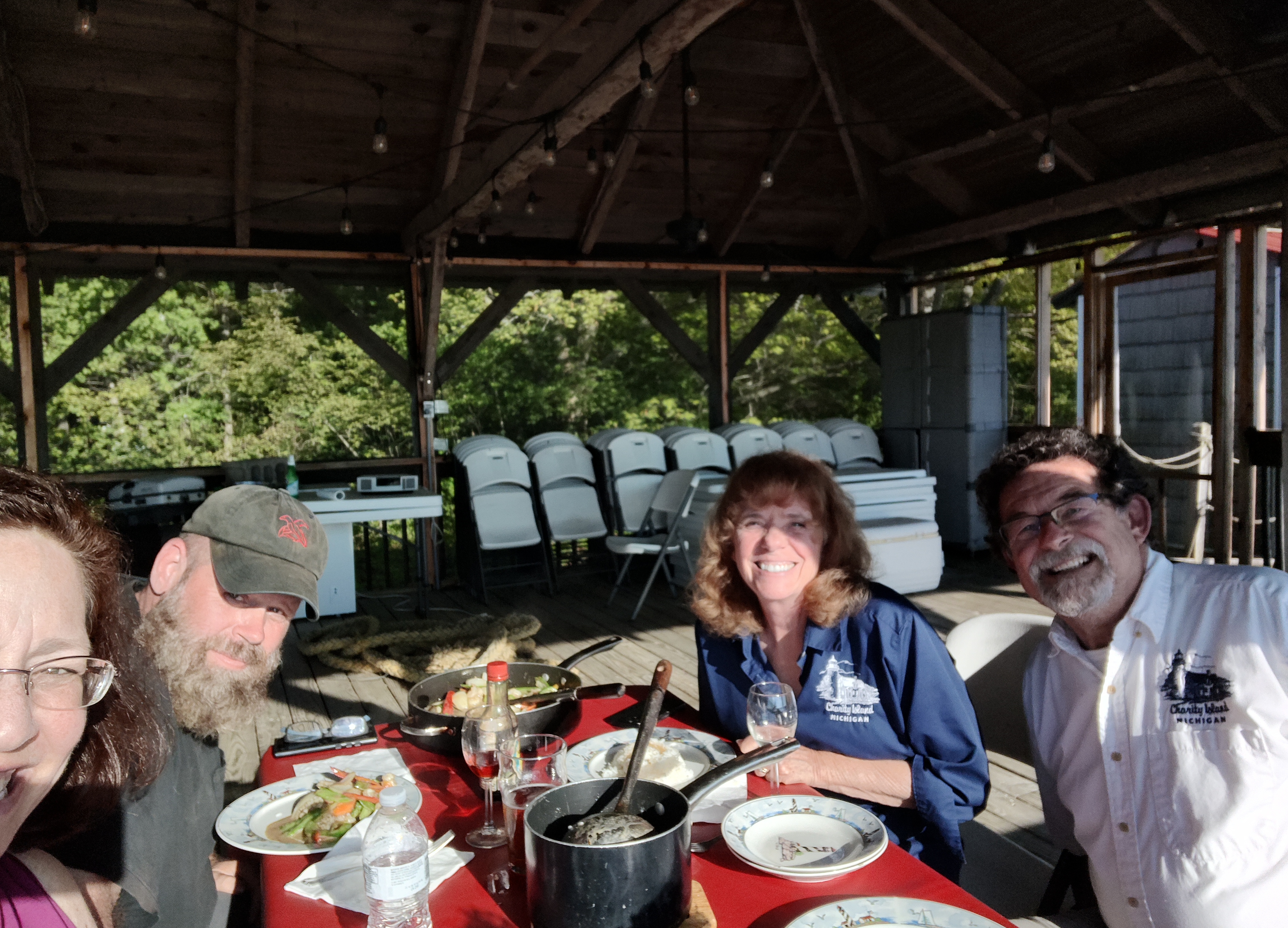
Connecting with others, making memories and keeping history alive make our lives richly meaningful. Bob and Karen have served hundreds, not only meals, but hospitality that visitors will always remember! We have been so fortunate to get to know Karen and Bob!
Related Links:
Join us on our trip! Here’s our YouTube video!
Resources:
Bob and Karen Wiltse
Northern Bay Arenac Rotary Facebook page
Charity Island website
Explore Charters website
Charity Island Vrbo website






4 thoughts on “Modern Lighthouse Keepers – Charity Island”
I love learning about history of lighthouse learn more about it.
Loved this adventure as always! The story about the lady’s promise to her Grandfather brought tears to my eyes. What a wonderful way to keep history alive. Keep it up we are always listening.
My husband is the great grandson of Charles Chester McDonald, one of the last lighthouse keepers for Charity Island. He is named after him. He was his father, Otis McDonald’s grandfather. We live in Dowagiac MI and would love to know if there is any family from the area..we have never heard where is buried, if he married. Thank you for any guidance. My husband, Charles Chester McDonald is 75 now and would like memories to pass to his children.
Debra, Thank you for reaching out to us and sharing your incredible connection. Bob and Karen Wiltse, the current owners of the lighthouse quarters, have also asked the public to share any information about Charles Chester McDonald. I wish I could offer more details to you and your family. -Martha “Poppins” Hayden